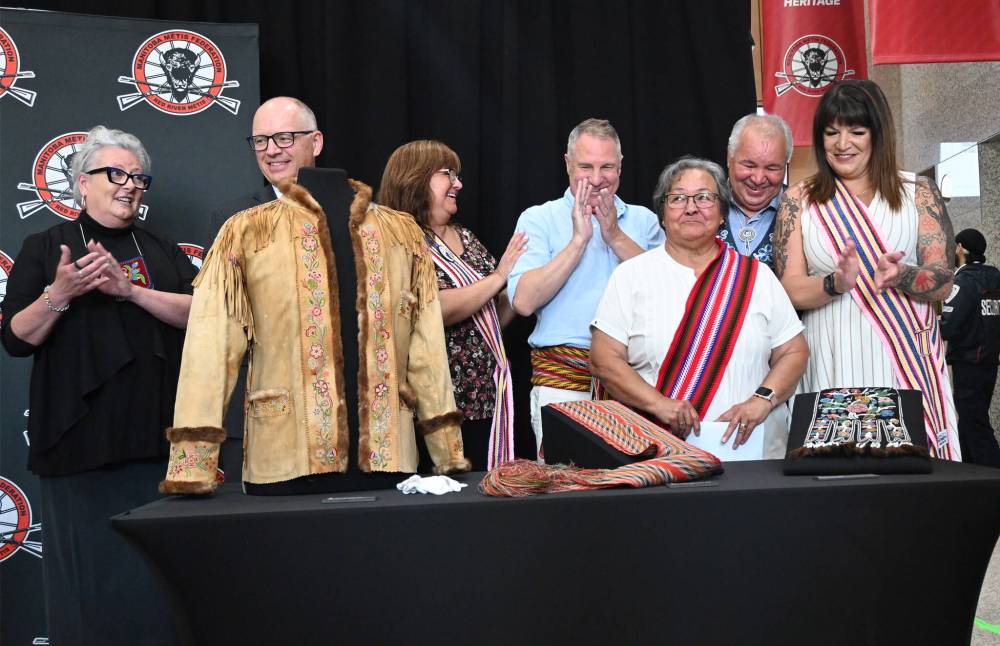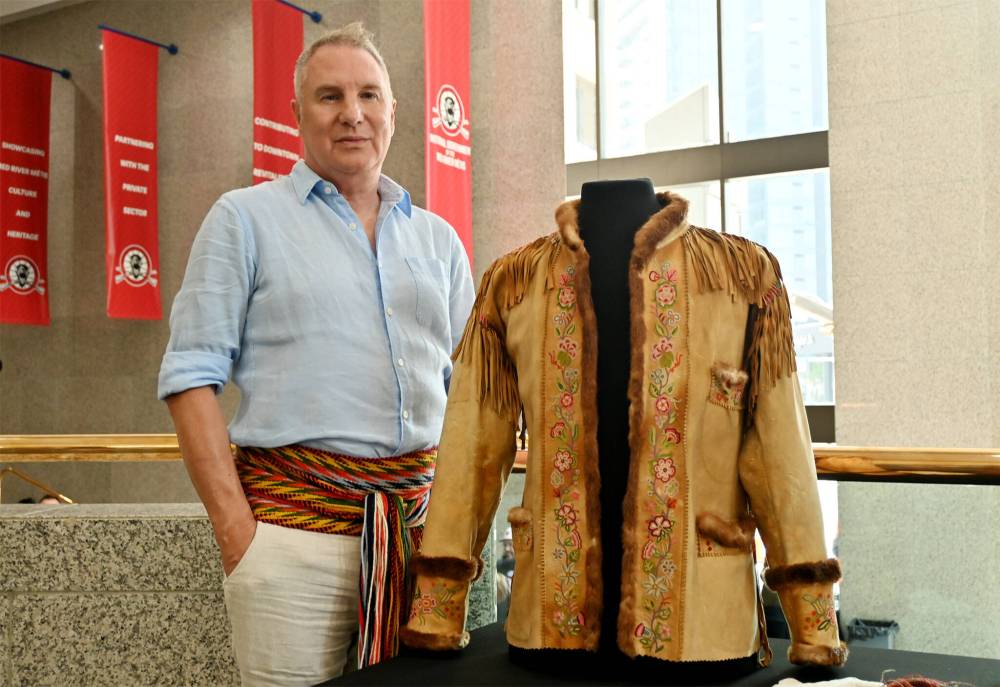Manitoba Métis Federation purchases historical artifacts
Collection includes art, clothing, everyday items
Advertisement
Read this article for free:
or
Already have an account? Log in here »
To continue reading, please subscribe:
Monthly Digital Subscription
$1 per week for 24 weeks*
- Enjoy unlimited reading on winnipegfreepress.com
- Read the E-Edition, our digital replica newspaper
- Access News Break, our award-winning app
- Play interactive puzzles
*Billed as $4.00 plus GST every four weeks. After 24 weeks, price increases to the regular rate of $19.00 plus GST every four weeks. Offer available to new and qualified returning subscribers only. Cancel any time.
Monthly Digital Subscription
$4.75/week*
- Enjoy unlimited reading on winnipegfreepress.com
- Read the E-Edition, our digital replica newspaper
- Access News Break, our award-winning app
- Play interactive puzzles
*Billed as $19 plus GST every four weeks. Cancel any time.
To continue reading, please subscribe:
Add Free Press access to your Brandon Sun subscription for only an additional
$1 for the first 4 weeks*
*Your next subscription payment will increase by $1.00 and you will be charged $16.99 plus GST for four weeks. After four weeks, your payment will increase to $23.99 plus GST every four weeks.
Read unlimited articles for free today:
or
Already have an account? Log in here »
Métis artifacts previously scattered across the world have now returned home to Manitoba.
The Manitoba Métis Federation unveiled its newly acquired 142-piece collection on Wednesday in Winnipeg. The collection, titled Our Grandmothers, includes silk embroidery, beaded caribou hide coats and moccasins, along with everyday items such as horse blankets.
Some of the artifacts date back as early as 1830.

MATTHEW FRANK / FREE PRESS
The Manitoba Métis Federation unveils its newly acquired 142-piece collection, Our Grandmothers, on July 2.
The exhibition will be housed in the MMF’s Red River Métis National Heritage Centre at 335 Main St., which is slated to open by 2027.
Gregory Scofield, a University of Victoria professor and the collection’s curator, says it took nearly 25 years to gather all the items in the collection.
“These pieces carry the stories, the geographies, the thoughts, the energy of the women that created them, and so these pieces really become a visual document,” he says.
The items represent the utilitarian work Métis women did for their families, and were created either as gifts or to be sold at tourist markets.
The majority of the artifacts are from Manitoba, while others originate from different Métis settlements in Western Canada, but Scofield says some were found in France, Italy, the United Kingdom and the United States.
As someone who identifies as Red River Métis, Scofield sought out the pieces not for his personal collection, but so they could eventually be returned to Manitoba for the community to appreciate.
It has been a sacred and emotional experience finding and reclaiming the items so the Métis community’s ancestral grandmothers can be honoured, he says.
“They have been sitting in boxes, or they’ve been discarded, or they’ve been misrepresented or misidentified, so when the pieces have returned home, you’re able to give them their proper attributions again, being able to caretake for them, not only physically, but to also be able to also give them back their stories,” Scofield says.
Our Grandmothers marks the second collection the MMF has purchased to fill its heritage centre. The first included literature and documents, including poems written by Métis leader Louis Riel.
MMF president David Chartrand says his organization has spent nearly $1 million reclaiming items, and he intends to spend more.

MATTHEW FRANK / FREE PRESS
University of Victoria professor and curator Gregory Scofield with a beaded caribou hide coat.
The exhibitions are also being rounded out with items donated by citizens who have shared family heirlooms.
Chartrand hopes the artifacts will help educate the public about Métis heritage and the wider story of how Western Canada was built.
“I hope people will take away, first, the richness of my people, and a sense of our pride for who we are,” Chartrand told reporters.
“Why these beads? You see how beautiful they are. You’ll look and you’ll just see colours, to us, we see stories.”
There has been no resistance in handing the items over to be displayed, Chartrand says, adding the MMF is also discussing repatriating items from other Canadian museums and the Roman Catholic Church.
matthew.frank@freepress.mb.ca





